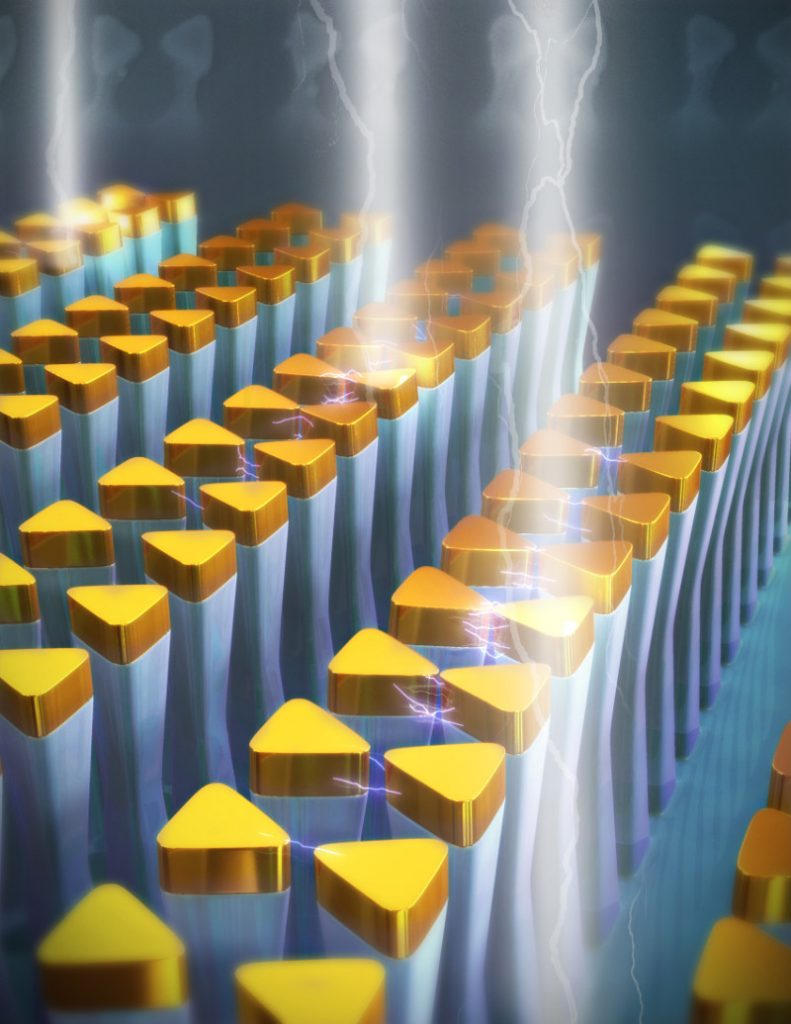Researchers at the University of Illinois at Urbana-Champaign have developed a new kind of tunable nanoantenna that could point towards novel plasmonic-based optomechanical systems that use plasmonic field enhancement to instantiate mechanical motion.
The research, led by Kimani Toussaint, Ph.D., associate professor of mechanical science and engineering at the University of Illinois, was recently published in Nature Communications.
“Recently, there has been a lot of interest in fabricating metal-based nanotextured surfaces that are pre-programmed to alter the properties of light in a specific way after incoming light interacts with it,” Toussaint said in a recent press release. “For our approach, one can take a nanoarray structure that was already fabricated and further reconfigure the plasmonic, and hence, optical properties of select antennas. Therefore, one can decide after fabrication, rather than before, how they want their nanostructure to modify light.”
Specifically, the nanoantenna that the research team developed was a metal, pillar-bowtie nanoantenna (p-BNA) array template on 500 nm-tall glass pillars. The research showed that the gap size for single or multiple p-BNAs could be tuned down to approximately one-fourth the size that previous methods had achieved – that is, to a tiny 5 nm.

The research team used a scanning electron microscope (SEM) to deform individual or groups of p-BNA structures within a sub-array, with velocities up to 60 nm/sec. The researchers also examined the spectral responses of specific regions within the array using a photonic crystal fiber, which generated a quasi-white light continuum.
The scientists believe that the relatively high ratio of pillar height-to-thickness (about 4;2), along with a significant thermal contribution, allow the pillars to be put into motion by electron beam-induced gradient forces.
“On a fundamental level, our work demonstrates electron-beam based manipulation of nanoparticles an order of magnitude larger than previously possible, using a simple SEM operating at only a fraction of the electron energies of previous work,” Brian Roxworthy, Ph.D., first author of the paper, said. “The dramatic deformation of the nanoantennas we observe is facilitated by strong in-gap plasmonic modes excited by the passing electrons, which give rise to nanoNewton-magnitude gradient forces on the constituent metal particles.”
This new technology allows scientists to tune the optical plasmonic response of the nanoantennas down to a single nanoantenna, about 250 nm across. The Illinois research team believes this new discovery is important because it could pave the way for unique nanophotonic devices designed for sensing and particle manipulation.
“Our fabrication process shows for the first time an innovative way of fabricating plasmonic nanoantenna structures under the SEM, which avoids complications such as proximity effects from conventional lithography techniques,” Abdul Bhuiya, another researcher on the project, asserted. “This process also reduces the gap of the nanoantennas down to ~5 nm under SEM with a controlled reduction rate.”
Additionally, researchers predict that the new nanoantenna technology could be a useful way of studying mechanical, electromagnetic, and thermal phenomena on a nanoscale.
“With this new fabrication technique, it opens an avenue to study different phenomena which leads to new exciting research fields,” Bhuiya said.
– Melanie Abeygunawardana
